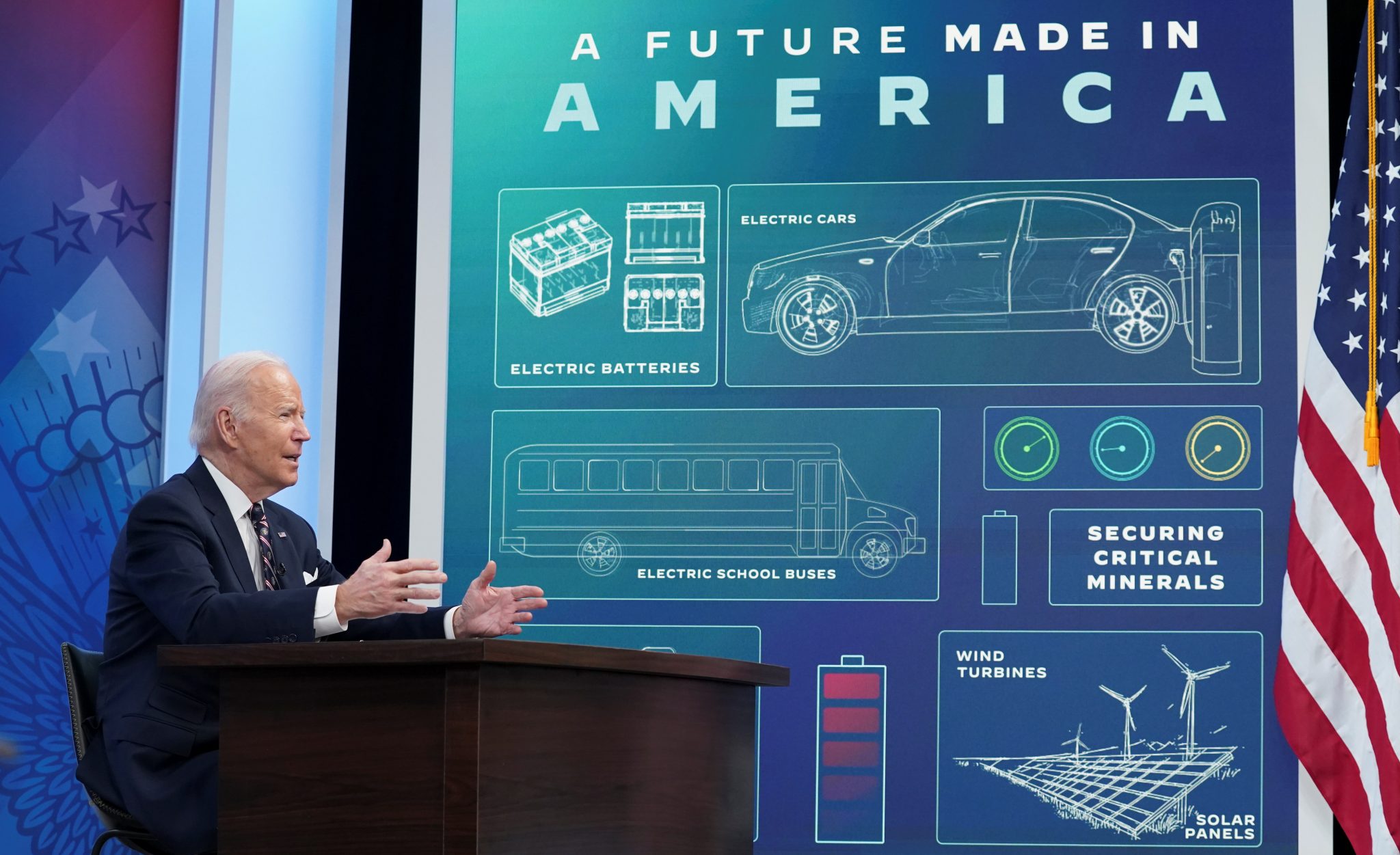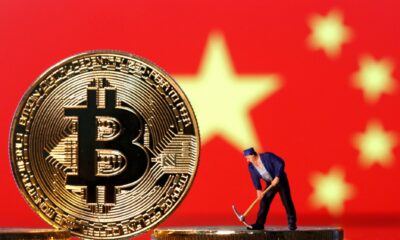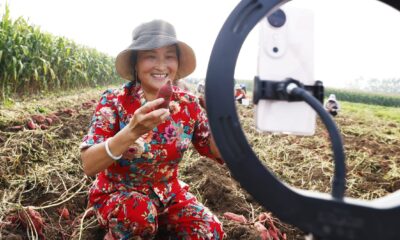Trade
The climate doesn’t care who builds batteries

Author: Editorial Board, ANU
Like it or not, the structure of global trade in green technologies and the raw materials required for their manufacture is being decided in an era when geopolitics trump markets, and the WTO’s credibility to check the abuse of national security exceptions is near rock bottom.
The upshot, as Mari Pangestu explains in this week’s lead article, excerpted from the upcoming edition of the East Asia Forum Quarterly, is that the green transition is greasing the political skids for a resurrection of inward-looking industrial policy.
‘Achieving net zero carbon emissions will require an estimated seven-fold increase in demand for transition-critical minerals between 2021 and 2040’, Pangestu highlights. Yet because of China’s dominance in the processing of these minerals, and in the production of the batteries that need them, ‘developed countries have introduced industrial policies such as reshoring the sourcing of transition-critical minerals and the production of low-carbon technologies’.
Nowhere is this more apparent than in the electric vehicle (EV) sector. The decarbonisation agenda has dovetailed with a resurgent scepticism of trade and free markets that cuts across left–right divides in the United States. The Inflation Reduction Act’s measures to make EVs built with Chinese inputs uncompetitive in the US market, along with efforts by Japan and Europe to force carmakers to diversify their sources of EV inputs away from China, could artificially bifurcate the global automotive industry as the shift away from petrol-powered cars accelerates.
Is the huge advantage China has developed in industries key to the green transition a market failure or security threat that justifies ‘resilience’-boosting interventions on the part of other economies?
The idea that China has form in weaponising the critical minerals trade for political ends is prompted by memories of Chinese restrictions on the export of rare earths to Japan in 2010, a move that is often attributed to China’s anger over the detention of a Chinese national by Japanese authorities during a clash over the disputed Senkaku/Diaoyu islands.
But whether political, as opposed to economic, imperatives drove the 2010 restrictions are less clear upon closer inspection. China backtracked on the ban not long after, recognising the economic and reputational damage it entailed, and it lost a case brought against it through the WTO’s (now semi-defunct) dispute settlement mechanism by Japan, the United States and the European Union. Given that the importance to the Chinese economy of the minerals processing and battery industries has only grown since then, we can’t be sure at all that China would cut off its nose to spite its face by restricting the export of minerals or batteries in a crisis — at least, not sure enough to pre-empt such a scenario with a brazen attempt to build out Chinese inputs from EV supply chains, as the Biden administration is trying to do.
Ultimately the climate doesn’t much care who makes batteries, solar panels, or electric vehicles — the interests of the environment, and the vast majority of national governments and consumers, is in green technologies that are abundant and cheap. The problem, as Pangestu writes, is that ‘current industrial policy has the potential to disrupt or raise the cost of access to critical minerals and transition technologies, especially among developing countries’.
This point is even more important given the questions about which green technologies will triumph as technical innovation moves more quickly than industries can be restructured — witness the uncertainty about the future of the battery industry as new types of battery less dependent on metals like nickel and cobalt grow more competitive. That uncertainty should be at the front of policymakers’ minds in countries rich in newly-‘critical’ minerals, who might be tempted to follow Indonesia’s example and force investment in downstream industries by banning the export of unprocessed minerals now central to battery production.
‘Keeping trade open and predictable is as vital to resource-rich countries as it is to resource-poor economies. It is also essential for the diversification of refining and processing capacity to reduce dependence on China’, Pangestu says.
Yet this goal lies in want of a platform for its achievement, with the WTO largely out of commission and neither of the major plurilateral free trade agreements in Asia — RCEP and the CPTPP — offering a forum for the…
Trade
Self-Reliance and Openness: Core Principles of China’s Third Plenary Session

The Third Plenum communique from the CCP indicates a prioritization of stability and compromise in response to China’s economic challenges. It highlights the concept of Chinese-style modernization and establishes political guidelines for balancing regulation and market forces.
The CCP’s Third Plenum communique signals a focus on stability and compromise in the face of China’s economic challenges. It emphasises Chinese-style modernisation and sets political directions for balancing regulation and market forces. While not as groundbreaking as previous plenums, it acknowledges the importance of market mechanisms and technological self-reliance, aiming to address issues like high youth unemployment and private sector uncertainty. The communique seeks to navigate the complexities of global competition and domestic innovation, potentially reshaping global supply chains and trade dynamics. Overall, it presents a pragmatic blueprint for China’s economic future.
Source : Self-reliance and openness central pillars of China’s Third Plenum | East Asia Forum
Trade
Trade Prevails Over Political Persuasions in China-Germany Relations

China and Germany maintain a strong bilateral relationship, rooted in economic cooperation despite ideological differences. Recent visits and agreements focus on expanding trade and addressing mutual concerns, navigating challenges while nurturing ties.
Evolving Bilateral Ties
China and Germany share a strong bilateral relationship, rooted in history since 1972. This connection has seen moments of cooperation intertwined with periods of tension. German Chancellor Olaf Scholz’s April 2024 visit underscores Germany’s commitment to fostering this partnership, reflecting a mutual interest in maintaining economic ties despite ideological differences.
Economic Pragmatism
As the second and third largest global economies, China and Germany’s economic interdependence is crucial. Germany emerged as China’s primary trading partner in 2023, with trade values reaching €254.4 billion (US$280 billion). In response to global scrutiny, Germany has taken a balanced approach, emphasizing economic stability over political discord. This was evident during Scholz’s prior visit in November 2022, where his diplomatic tone contrasted with broader EU sentiments.
Facing Challenges Together
Despite increasing public skepticism in Germany regarding China’s global influence and human rights issues, both nations continue to seek common ground. Their October 2023 Joint Statement highlights intentions to pursue cooperation in areas like carbon neutrality and open markets. To navigate these complex terrains, Germany can utilize its institutional frameworks to enhance dialogue, while also considering supply chain diversification to reduce dependency on China. The intertwining nature of their economies suggests that, despite challenges, both countries will continue to prioritize their substantial trade relations.
Source : Trade trumps political persuasions in China–Germany relations
Trade
Fixing fragmentation in the settlement of international trade disputes

Fragmentation in global trade due to the lack of development in multilateral trade rules at the WTO has led to an increase in FTAs. The Appellate Body impasse has further exacerbated fragmentation, requiring a multilateral approach for reform.
Fragmentation in Global Trade
Fragmentation in global trade is not new. With the slow development of multilateral trade rules at the World Trade Organization (WTO), governments have turned to free trade agreements (FTAs). As of 2023, almost 600 bilateral and regional trade agreements have been notified to the WTO, leading to growing fragmentation in trade rules, business activities, and international relations. But until recently, trade dispute settlements have predominantly remained within the WTO.
Challenges with WTO Dispute Settlement
The demise of the Appellate Body increased fragmentation in both the interpretation and enforcement of trade law. A small number of WTO Members created the Multi-Party Interim Appeal Arbitration Arrangement (MPIA) as a temporary solution, but in its current form, it cannot properly address fragmentation. Since its creation in 2020, the MPIA has only attracted 26 parties, and its rulings have not been consistent with previous decisions made by the Appellate Body, rendering WTO case law increasingly fragmented.
The Path Forward for Global Trade
Maintaining the integrity and predictability of the global trading system while reducing fragmentation requires restoring the WTO’s authority. At the 12th WTO Ministerial Conference in 2022, governments agreed to re-establish a functional dispute settlement system by 2024. Reaching a consensus will be difficult, and negotiations will take time. A critical mass-based, open plurilateral approach provides a viable alternative way to reform the appellate mechanism, as WTO Members are committed to reforming the dispute settlement system.
Source : Fixing fragmentation in the settlement of international trade disputes






